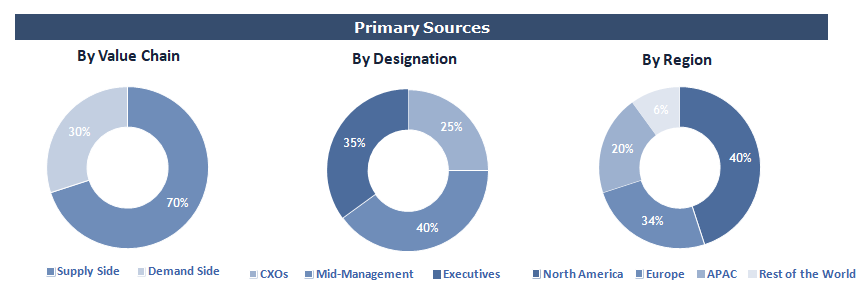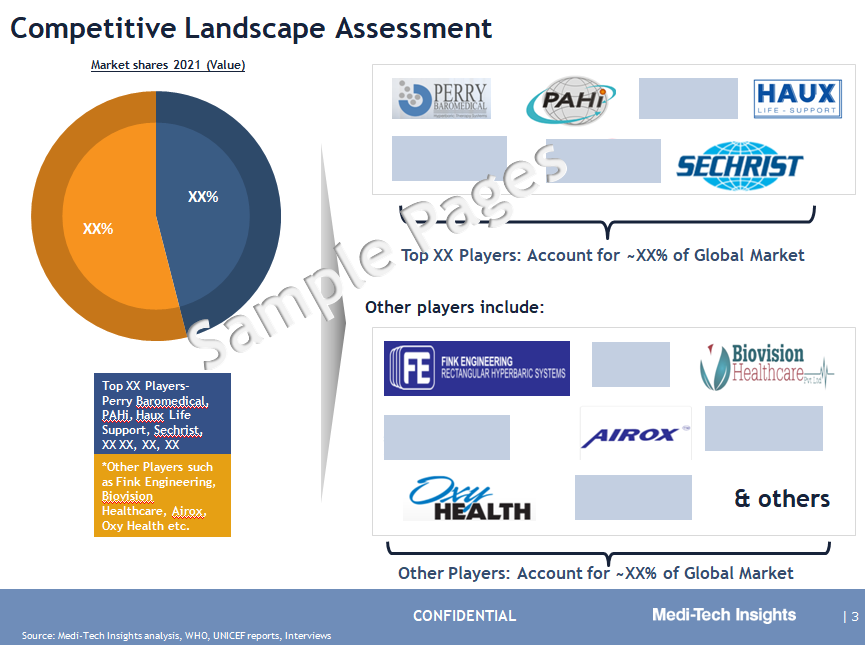Hyperbaric oxygen therapy is a non-invasive technique that is used to increase the rate of healing of damaged tissues. This technique utilizes chambers to provide an optimum level of pure oxygen to the tissues in the human body under high atmospheric pressure. In this treatment, the air pressure is increased two to three times higher than the normal air pressure. Thus, the oxygen-carrying blood helps to fight bacteria and other unwanted hosts in the body by promoting healing. Hyperbaric oxygen therapy is used to treat wounds as a result of radiation, air bubbles in blood vessels, and many other serious infections like diabetes, venous or arterial insufficiency, crush injuries, and wounds/tissue damage caused by the late effects of radiation therapy. Currently, Hyperbaric oxygen therapy uses 2 types of chambers:
- Monoplace chamber: This chamber is built for one person. It's a long, plastic tube that resembles an MRI machine. The patient slips into the chamber. It is slowly pressurized with 100% oxygen.
- Multiplace chamber: This chamber, or room, can fit two or more people at once. The treatment is largely the same. The difference is that people breathe pure oxygen through masks or hoods.
Technological Advancements, Wide Application horizon and Awareness Campaigns drives the HBOT Market
Hyperbaric oxygen therapy devices were originally designed to use for decompression sickness and other diving complications. Nowadays, due to advancements in technologies hyperbaric oxygen therapy (HBOT) treats a wide range of conditions such as cosmetic procedures, wound healing, Alzheimer's disease, gas embolism, radiation tissue damage (ORN), and refractory osteomyelitis, including life-threatening emergencies. Additionally, patients with brain injuries and cancer are also being treated using this technology. Recently, many developments have been made to improve the quality of life of patients such as:
- In May 2021, CūtisCare, a leader in wound care and hyperbaric management, launched the Hyperbaric Aware website and a national campaign to elevate awareness of hyperbaric oxygen therapy.
- In November 2019, AHA Hyperbarics introduced the AHA Flex V2, a new model of innovative high-pressure medical hyperbaric chambers that are specifically built to meet the growing need for HBOT safety and efficacy.
- In February 2019, New medical research was conducted at the LSU Health New Orleans School of Medicines indicating that the HBOT procedure can be beneficial for patients with Alzheimer’s when conducted with other therapies or by itself.
“New product launches and innovations in HBOT technologies like portable HBOT devices will open up a new frontier for the market to grow in the future. Technology has a key role to play.” -Vice President, Product & Innovation Department, HBOT Devices Company, United States
Medical Benefits of Hyperbaric Oxygen Therapy Devices Fuels Its Demand
Body tissue needs a sufficient amount of oxygen to function properly. Tissue that is injured requires even more oxygen to heal. Hyperbaric oxygen therapy devices speed up the healing process by delivering extra oxygen to these injured areas. This excess oxygen in the circulation encourages the production of white blood cells and leucocytes, which fight bacteria, as well as the secretion of stem cells, which aids in speedier healing and the restoration of normal body function. Benefits associated with these devices are:
- Increased blood flow and circulation throughout the body
- Block harmful bacteria and strengthens the body’s immune system
- Aids in the formation of new collagen and skin cells
- Fights against toxins to reduce swelling and pain
- Enhance the effectiveness of antibodies
Key Challenges/ Constraints: Hyperbaric Oxygen Therapy Devices Market
The high cost associated with HBOT treatment which requires multiple sessions, reimbursement issues, and complications after HBOT are some of the key factors that are likely to hamper its growth in the coming years. Furthermore, several insurance companies do not cover HBOT treatment under their policy. There are also several complications associated with HBOT such as trauma to the middle ear, eye damage, and sinus problems. In rare, severe cases, a person can get oxygen poisoning, which can lead to seizures, fluid in the lungs, lung failure, or other problems.
North America Leads the Adoption of Hyperbaric Oxygen Therapy Devices Market
From a geographical perspective, North America holds a major market share of the HBOT devices market. This can be mainly attributed to the increasing preference for wound healing treatments, rising number of people engaging in adventure activities, favorable reimbursement policies, and rising investments by key players to develop advanced hyperbaric oxygen therapies in the region. In the Asia-Pacific region, China is likely to boost the market significantly due to growing medical tourism, and growing awareness regarding the devices to treat several diseases such as decompression sickness.
Competitive Landscape Analysis: Hyperbaric Oxygen Therapy Devices Market
Some of the key/promising players operating in the global hyperbaric oxygen therapy devices market include Perry Baromedical, Sechrist Industries, Inc., Tekna Hyperbaric, Pan America Hyperbarics, Inc., Haux-Life Support, PCCI, Inc., Fink Engineering, Hipertech Electronics Inc., Sosgroup, Gulf Coast Hyperbarics, Inc., Hearmec, OxyHealth, Environmental Tectonics Corporation, IHC Merwede Holding B.V., Airox Technologies Private Limited, Biovision Healthcare Pvt Ltd., Richmond Hyperbaric Health Center, among others.
Key Strategic Questions Addressed
- What is the market size & forecast of the Hyperbaric Oxygen Therapy Devices market?
- What are the historical, present, and forecasted market shares and growth rates of various segments and sub-segments of the Hyperbaric Oxygen Therapy Devices market?
- How has Covid impacted the Hyperbaric Oxygen Therapy Devices market?
- What are the major growth drivers, restraints/and challenges impacting the market?
- What are the opportunities prevailing in the market?
- Which region has the highest share in the global market? Which region is expected to witness the highest growth rate in the next 5 years?
- Who are the major players operating in the market? What is the competitive positioning of key players?
- What are the key strategies adopted by players in Hyperbaric Oxygen Therapy Devices market?
The study has been compiled based on the extensive primary and secondary research.
Secondary Research (Indicative List)

Primary Research
To validate research findings (market size & forecasts, market segmentation, market dynamics, competitive landscape, key industry trends, etc.), extensive primary interviews were conducted with both supply and demand side stakeholders.
Supply Side Stakeholders:
- Senior Management Level: CEOs, Presidents, Vice-Presidents, Directors, Chief Technology Officers, Chief Commercial Officers
- Mid-Management Level: Product Managers, Sales Managers, Brand Managers, R&D Managers, Business Development Managers, Consultants
Demand Side Stakeholders:
- Stakeholders in Hospitals, Ambulatory Care Centers, Outpatient Clinics, Standalone Hyperbaric Treatment Centers & Other End Users.
Breakdown of Primary Interviews

Market Size Estimation
Both ‘Top-Down and Bottom-Up Approaches’ were used to derive market size estimates and forecasts
Data Triangulation
Research findings derived through secondary sources & internal analysis was validated with Primary Interviews, Internal Knowledge Repository and Company’s Sales Data






